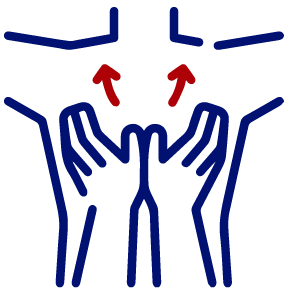
What Is Tennis Elbow (Lateral Epicondylitis)?
Tennis elbow, medically known as lateral epicondylitis, is a painful condition that occurs when the tendons in the forearm become inflamed due to overuse or repetitive stress. Despite its name, you don’t have to be a tennis player to develop this condition. It can affect anyone who engages in activities that strain the forearm muscles.
What Are The Symptoms?
Tennis elbow, resulting from forearm muscle and tendon overuse, manifests in the following symptoms:

Pain
The most common symptom is pain on the outer part of the elbow. The pain may range from mild discomfort to severe and can be persistent.

Tenderness
The affected area around the outer elbow becomes tender to the touch, especially near the bony prominence called the lateral epicondyle.

Weakness
Many individuals with tennis elbow experience weakness in the forearm, making it difficult to grip objects or perform tasks that require a strong grip.

Stiffness
Some people may notice stiffness in the elbow joint, which can limit range of motion.

Difficulty in Gripping
Simple tasks, like holding a coffee cup or shaking hands, can become painful due to weakened grip and forearm pain.
Causes And Risk Factors
Explore the roots of tennis elbow, a painful condition, and essential risk factors. Understanding these elements is vital for preventing and managing tennis elbow effectively.
What are the causes?
Discover the underlying factors leading to tennis elbow, a painful condition, and learn how to prevent and manage it effectively.
- Repetitive arm movements such as those involved in tennis, painting, or using hand tools.
- Poor technique or equipment in sports or activities.
What are the risk factors?
- Age: Tendons undergo age-related changes over time.
- Sports Or Occupation:Occupational factors, including professions that involve repetitive gripping and movements.
How Is Tennis Elbow (Lateral Epicondylitis) Diagnosed?
Tennis elbow can present a range of symptoms and accurate diagnosis is key to effective treatment. Various diagnostic methods are employed by healthcare professionals to pinpoint the condition and determine its severity.
- Resisted Wrist Extension Test: The patient extends their wrist against resistance, causing pain in the affected area.
- Cozen’s Test: The doctor asks the patient to make a fist and extend the wrist against resistance, which can reproduce pain. The test can be reversed to test for the same condition on the medial epicondyle (sometimes called Little Leaguer’s or Golfer’s Elbow).
- MRI or X-rays: These imaging tests may be used to rule out other conditions.

How Can We Treat Tennis Elbow (Lateral Epicondylitis)
While Tennis Elbow is a chronic condition, there are multiple treatment choices to aid in symptom management and improve your quality of life. Some of these treatments comprise:
Schedule Your Appointment Today
Contact us today to book a free 15-minute consultation with our Chiropractor in Highlands Ranch! We look forward to getting you on the path to optimal health and wellness.




